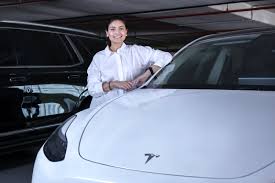A Shock for UAE’s Growing EV Community
The UAE has been making headlines as one of the fastest adopters of electric vehicles in the region. From luxury Teslas to budget-friendly Chinese EV brands, the roads are increasingly filled with sleek, quiet, zero-emission cars. But there’s one development EV owners didn’t see coming — their car insurance premiums are now, on average, 72% higher than those for petrol cars.
For many drivers, this has been a rude awakening. What was once seen as a financially savvy, environmentally friendly choice is now turning into a costlier commitment than expected. The reason behind the jump isn’t simply “because it’s electric” — it’s a combination of technology, repair costs, and market dynamics.
Understanding the Price Gap
Insurance is all about assessing risk. When it comes to EVs, insurers in the UAE are factoring in a few unique challenges. Electric cars are powered by advanced battery packs and computer-controlled systems, which can be expensive to repair or replace after an accident. Even minor collisions can lead to hefty repair bills because specialist technicians and parts are required.

This higher repair cost directly impacts insurance premiums. While a petrol car might only need a quick fix at a neighbourhood garage, an EV often has to go to a certified service centre with highly trained staff, driving up costs for the insurer — and, in turn, for the driver.
The Role of Battery Costs
One of the biggest cost drivers in EV insurance is the battery. The battery pack can account for 30–50% of an electric car’s total value. Any damage to it, even in a small accident, could mean a replacement costing tens of thousands of dirhams.

This makes insurers cautious. They must factor in the possibility of expensive claims, which pushes premiums higher. Even though EV batteries are designed to last for years, the high price of repair or replacement makes them a major risk factor.

Shortage of Specialist Workshops
While the UAE is making progress in EV infrastructure — from public charging points to dedicated service centres — the number of specialised repair shops is still limited. The scarcity of qualified technicians means that repairs often take longer and cost more, further justifying the insurers’ higher pricing models.
This is not just a UAE issue; it’s a global challenge. The technology is still relatively new, and the pool of skilled labour is small. Until this gap closes, insurers will continue to view EV repairs as a premium service.
Technology That’s Expensive to Fix
Modern EVs are packed with advanced driver-assistance systems, high-definition cameras, sensors, and AI-powered navigation. These features make driving safer and more enjoyable, but they also increase the complexity — and cost — of repairs.
Replacing a bumper on a petrol car might be a few hundred dirhams. Replacing a bumper on an EV might also involve recalibrating sensors, replacing embedded cameras, and reprogramming software — a far pricier exercise.
Why Petrol Cars Are Still Cheaper to Insure
Petrol cars have decades of established repair ecosystems behind them. Parts are widely available, repairs are straightforward, and the labour pool is large. Insurers face fewer unknowns and can price policies more confidently.
For EVs, however, there’s still an element of uncertainty. How will they perform after 10 years on UAE roads? How will battery degradation impact resale values and repair needs? Until more long-term data is available, insurers tend to err on the side of caution — which means charging more.
What EV Owners Can Do to Lower Costs
While the cost gap might feel discouraging, there are steps UAE EV owners can take to reduce their insurance burden:
- Shop Around: Not all insurers price EVs the same way. Comparing quotes can yield significant savings.
- Opt for Higher Excess: Choosing a higher deductible can lower the premium, though it means paying more out-of-pocket in case of a claim.
- Bundle Policies: If you insure multiple vehicles or combine home and auto policies, insurers may offer discounts.
- Drive Safely: A clean driving record can help keep premiums in check over time.
The Government Push and Future Outlook
The UAE government remains committed to EV adoption as part of its green mobility goals. As the market matures, more repair centres will open, technicians will gain experience, and battery technology will improve — all of which could bring insurance costs down in the future.
In the short term, however, EV drivers will have to balance the environmental benefits with the higher insurance costs. The trend of premium pricing is unlikely to reverse immediately, but with more competition in the market, there’s hope that rates will stabilise.
The Bigger Picture for the UAE Driver
The shift to electric mobility is more than just a trend — it’s part of a global movement towards cleaner, smarter transport. While the higher insurance premiums may seem like a setback, they also reflect the cutting-edge nature of EV technology and the need for specialised care.
For many, the quiet drive, zero emissions, and long-term fuel savings are still worth the extra cost. But for those considering the switch, it’s important to factor in these insurance differences before signing the dotted line.
In the end, the UAE’s EV journey is just getting started. As the country continues to build its green infrastructure and the market adjusts, today’s high costs could become tomorrow’s competitive advantage — rewarding early adopters who stick with the change.
Do follow UAE Stories on Instagram
UAE to Launch Fully Unified, Digital Healthcare Licensing by 2026















